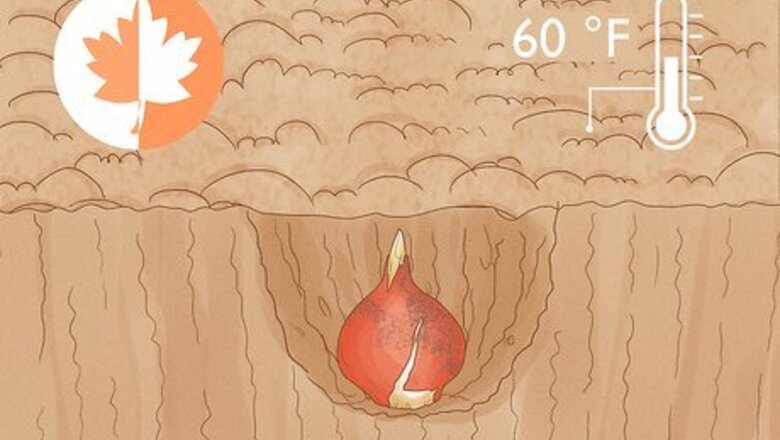
views
Getting Ready to Plant

Prepare to plant the bulbs in the fall. After the summer weather has faded into fall, and the nights have gotten colder, it's time to plant your bulbs and start dreaming of spring again. You want to plant the bulbs before the first deep frost, which hardens the grounds and makes it much more difficult to dig holes for the bulbs. The bulbs should be planted when the soil is still at least 60 °F (16 °C). Plan to plant the bulbs within a week after buying them. They shouldn't stay above the ground for too long. Don't plant the bulbs too early, or they might come up before the weather gets cold and die as soon as the frosts come. They should lie dormant in the ground all winter and come up in the spring. If you forget to plant your bulbs in the fall, then you can also plant them in early spring. However, do not plant bulbs any sooner than mid-April since the weather will likely be too cold at this time.

Choose tulip bulbs to plant. You can get them from a nursery, a home and garden store, or buy them online. Tulips are hardy flowers that will grow in most climates. Depending on what variety you buy, each bulb will produce one 1-4 stems and blossoms. Opt for perennial bulbs since these will bloom over several seasons. However, keep in mind that you will still need to replant your bulbs after a few years. Choose bulbs that are firm to the touch with a light brown papery skin, almost like an onion skin. Avoid choosing bulbs that feel dry, flaky, or relatively light. If that's the case, it's probably lost its moisture content, and it may not grow properly. Keep in mind that you can still try planting soft or shriveled bulbs. However, these bulbs may be rotten or dead, and may not sprout.
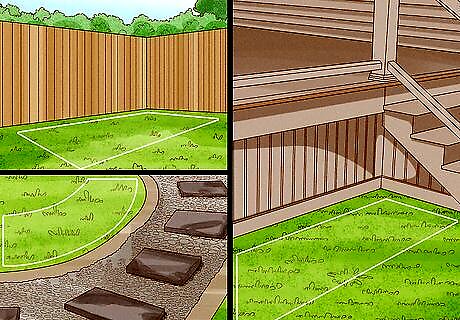
Decide where to plant the bulbs. Many people plant tulips along fences, walkways, or buildings to add little bursts of color. They're often planted in rows, since it's easy to control where they come up. Figure out where you want to plant your tulips as you get ready to plant them. Tulips grow best in areas that are sunny or lightly shaded, and not excessively wet. Tulips come in many colors, so it's easy to plant them in interesting patterns and shapes. You could alternate colors or plant a whole bed of multicolored tulips, for example. Design a tulip pattern that makes sense for your yard.
Planting the Bulbs
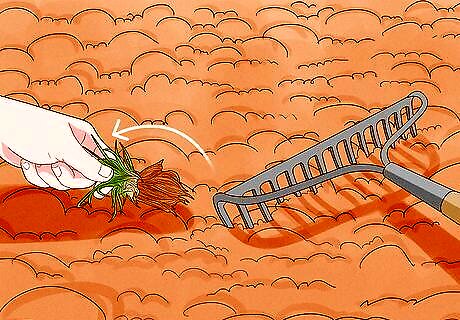
Assess the planting site. Tulips grow in most soils, and there's not much you need to do to get it ready for planting. However, if the soil where you live is very dry or hard, you can wait to plant the tulips until a day after it has rained. Remove any weeds or stones and use a trowel or garden fork to loosen and aerate the soil.
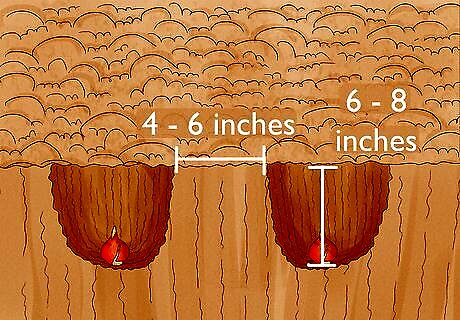
Dig holes for the bulbs. Tulip bulbs should be buried about 6 inches (15.2 cm) to 8 inches (20.3 cm) deep to prevent squirrels and other creatures from finding them and eating them. Space the holes 4 to 6 inches (10.2 to 15.2 cm) apart, and dig them about 8 inches (20.3 cm) from the base of the bulb. So if you have a 1-inch bulb, you'll need a 9-inch hole. The larger the bulb, the deeper the hole must be. As you dig, clear away roots, rocks and other debris that could impede the growth of your tulips. You can sprinkle kitty litter, gravel, holly leaves, or thorny bush branches into the hole to deter mice and other rodents from occupying the hole. If you are planting lots of tulip bulbs, then you can also use the trench method. To do this, dig a long trench to place the bulbs into instead of digging multiple small holes. Just make sure that you remember where you have already planted.
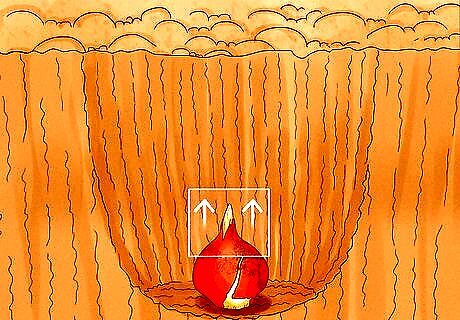
Plant the tulip bulbs. Place them in the holes pointy-side up (otherwise they'll try to sprout downward). Sprinkle the soil back into the holes and pack it down with your hands, taking care not to tilt the bulbs in another direction. Keep in mind that the more tulips you plant, the more impressive your garden will be when they bloom in the spring. Plant at least 50 bulbs throughout your yard for a bright garden full of tulips. Tulip bulbs are naturally perennials, meaning they can come back more than once. In most climates, though, the soil isn't conducive to more than one year of growth, and the bulb only contains enough nutrients for it to bloom once. If you want the tulips to come back after the first year, place some plant food in the holes before closing them back up.
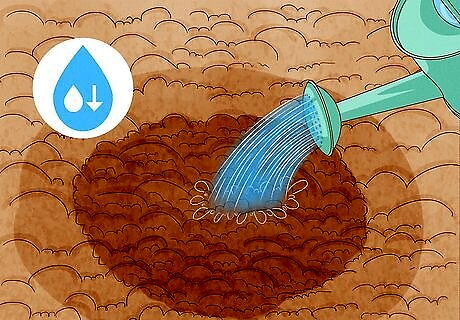
Water the bulbs lightly. Right after planting, give the bulbs some water. This helps them begin the process of growing. Don't give them a soaking, though; bulbs will decay and die if they get too wet. Don't water the bulbs again unless it's extremely dry outside. Unless the ground is very dry, there is no need to water the bulbs. Newly planted bulbs may rot if the soil becomes sodden and waterlogged. There should be enough rain through the autumn and winter to provide your bulbs with enough moisture.

Watch for the tulips to sprout in the spring. By March or April in the northern hemisphere and September or October in the southern hemisphere, your bulbs should have transformed into beautiful spring tulips.




















Comments
0 comment